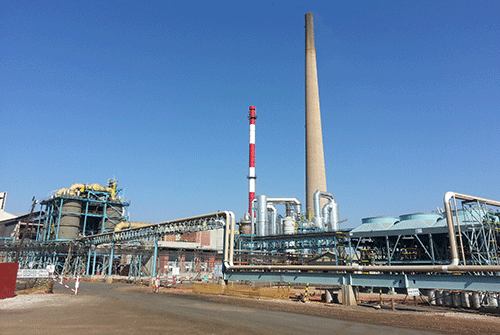A GROUP of 23 workers of the Dundee Precious Metals Mine at Tsumeb were recently admitted to hospital and treated for poisoning after they consumed contaminated water, which many thought was caused by the mine’s arsenic acid waste dump site.
Members of the community, some related to the workers, alerted this paper about the health scare at the town’s mine, which saw 23 workers being rushed to the town’s Lombard Clinic for treatment.
Worried and furious, the community members demanded that the mine’s leadership take responsibility for the incident, claiming that the contaminated water consumed by the workers might have allegedly been caused by the mine’s arsenic wastage site, which they believe pollutes the town’s underground water sources.
There is, however, no scientific proof or any material evidence to substantiate the community members’ claims.
The town of Tsumeb is heavily reliant on underground water for supplying residents through various boreholes.
Oshikoto health director Joshua Nghipangelwa, speaking to New Era, played down the community’s fears and claims, saying the incident of the 23 workers had nothing to do with the mine’s arsenic waste site but was caused by the effects of a microwave oven’s radiation they used.
“I can confirm the incident and can equally confirm that a total of 23 workers from the Dundee Precious Metals Mine were treated here at a government health facility. They were treated for poisoning caused by contaminated water they drank and looking at the tests we ran; it seems the workers were exposed to the contaminated water for a long time. But the good news is that they all responded well to the treatment and were subsequently discharged to go home for proper rest. They are all in good health as we speak now,” said Nghipangelwa.
He continued: “What we discovered is that the workers were actually exposed to microwave radiation, which caused diarrhoea and vomiting. They use the microwave to boil their water when making coffee or tea and that caused long-term effects on their health. We advised them to stop using the microwave oven to boil water as that radiation from the microwave is not good for the body in the long run.”
Radiation
He explained that microwaves produce non-ionizing radiation, which do not have the same risks as x-rays or other types of radiation. But microwave radiation can heat body tissues the same way it heats food and exposure to high levels of microwaves can cause nausea, vomiting, headache, and diarrhoea in the long term.
On the fears that the town’s underground water sources could be exposed to the mine’s arsenic waste site and pose a health risk to the community, Nghipangelwa said they have not recorded any cases where the town’s residents had to be treated for water poisoning related to exposure from the mine’s arsenic acid.
“We have not yet recorded such cases at any of our health facilities here, so it is a bit difficult to comment on the claims of the residents because we have not had such cases. As for the ones we treated recently, as earlier explained, they were caused by microwave radiation in the water they consumed and not exposure to arsenic acid.”
Attempts to get comment from the mine’s spokesperson Alina Garises proved futile, as she promised to respond to questions sent to her about the affected workers as well as health safety and standards at the mine, but never reverted.
Smelters
Dundee Precious Metals Inc acquired the Tsumeb smelter operations from Ongopolo mining and processing group and the Weatherly International PLC in 2010, with the aim to fully commercialise and bring the operations in line with best industry practice and standards.
Originally established in the early 1960s, the smelter remains one of only a few in the world that can treat complex copper concentrates, such as blister copper and sulphuric acid smelter products.
The blister copper is delivered to refineries in Europe and Asia for final processing to copper metal, while Sulphuric acid is a critical component in the mining industry, particularly for uranium and copper production businesses.
According to the mine’s website, upon acquiring operations an arsenic storage site was designed and built, and is being operated according to good international practices. The site is licensed by the Namibian government and is regularly inspected and audited by third party auditors.
Workers are regularly tested for arsenic exposure as part of a comprehensive employee health and safety programme, and continuous air quality monitoring as well as measuring community exposure to arsenic acid is regularly done, the mine claimed on its website.
ohembapu@nepc.com.na
Caption: (Tsumeb)


